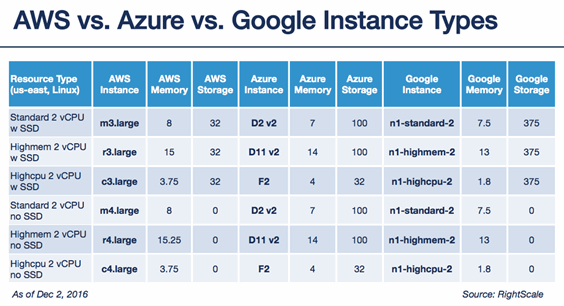Co-founder and a Managing Partner at CSW Solutions. You can find Yoel on LinkedIn and Twitter.
Across industries, the need for management of information, revenue, and technology lends itself to the demand for security, capacity, and agility. With growth comes risk and there seems to be no end to the requisite efficiency in the storage and retrieval of sensitive information. Migrating to the Cloud has been an integral facet of modernization in any business strategy and these days, there are more than a handful of factors to consider. The number of operational locations, remote or local users, and each user’s unique accessibility must also be considered to better understand the kind of cloud service you need. Even while it seems there is a wealth of information, based on our experience, we have done our best to find the most relevant and up-to-date methods so we could break it all down to the following:
The first step in migrating to the cloud is to take stock of your current IT infrastructure to decide what if anything needs to be migrated to the cloud and how this would affect the operational and economic stability of your company. Many applications and workloads might not be suitable for the migration while others would thrive, so compatibility is key in powering remote servers. You’ll also have to test and make changes to any systems or applications that will need integration. Consider the following characteristics of a cloud as it pertains to your application:
- Internet access
- Pooling of resources
- Scalability
- On-demand access
- Metered utility
Upon assessment of these finds, you’ll also need to have a better idea of what type of cloud you would like. There are public, private or hybrid clouds and they all have their benefits and limitations depending on the specifications needed by the business. Public clouds are probably the ones that we are the most familiar with as they are pretty much the internet and the most common and economical form of cloud computing.
Service providers use the internet to create storage and resources available to the general public. Hybrid clouds give you a more enhanced level of agility in organizing information while public. For example, an application can be portioned or migrated to a public cloud when there is high traffic or during predicted outages. Sensitive data, however, should always be only accessible internally. This is where private clouds must be considered. Private clouds are created entirely by and for the company and thus completely controlled within their parameters. Private clouds are most often used by larger enterprises as they end up being the costliest option. There is a very concise and straight-forward breakdown here.
The foundation of understanding infrastructure will help you fully understand the migration costs incurred when you move to the cloud but there is also the network, storage, and database capacity needed to run the applications you want to migrate. The testing, execution, and eventual maintenance might seem daunting but the end result will offer more versatility, adaptability, and peace of mind.
It is best to locate different vendors to request quotes and make sure the rates are based on a combination of usage/applications, storage, and a number of users. You’ll be able to launch new projects fast, exchange information and ideas with ease, and react to fluctuating market conditions without being at the mercy of an outdated or unpredictable system. You won’t ever have to fuss over buying and setting up new servers to handle demand since you can auto-scale a cloud server at your pace and with the load-balancing, backup functionality of the cloud server. The cost savings of a cloud migration vary and so it is important to do your homework. In some cases, it is the only option while in others the migration can be broken up into phases as if absorbing the cloud but this could cause issues as well since it would require re-structuring on a case by case basis.

As with most web-based platforms, the reliability and security of your applications and data play the biggest roles. Unexpected downtime is a grave concern when it comes to a network issue or inconvenient maintenance schedule.
Downtime can best be dealt with by the Service Level Agreement or SLA. This includes uptime. There must be proper coordination and communication with your provider or the partnership will not produce results. When migrating to the cloud allocate responsibilities and have accountability for every action. Ensure that there are transparencies and clear channels of communication.
For instance, outsourced parties or multiple vendors can be a great risk. It is crucial to work out the required service level agreements right at the start before you migrate. Give emphasis to maintenance and technical issues. Therefore, it is important to get to know your service provider and their role in providing solutions and responsive services, processes, and expertise as it may well be a long-term relationship. You’ll want to find out at what interval your backup will be taken by the provider. According to Rackspace, “While cloud computing brings unprecedented benefits to organizations and will be the dominant way of acquiring technology in the future, we also realize that IT decision-makers are confused given the sheer number of vendors in the marketplace. For this reason, IT decision-makers need to be well appraised of the issues around price, performance, and security of their chosen supplier.”
It’s best to make sure you also have a clause for downtime compensation from your service provider as well as insurance in case anything should happen to your remote servers. These will inevitably provide breathing room for your organization in case anything should happen to disrupt your service.
In summary, there are plenty of more things to consider when migrating to the cloud but these are a solid foundation on to start from when taking on the task. To move to a cloud and employ services to your specifications will require diligence and patience in order to transition smoothly. Thoughtful strategy and process implementation are key to cloud migration as maximizing on the return will solely depend on your business’s engagement with the cloud-based infrastructure. In a lot of ways, the cloud is a complex organism defined by the integrity of your compliance and design. Find out more about our Azure migration services.
